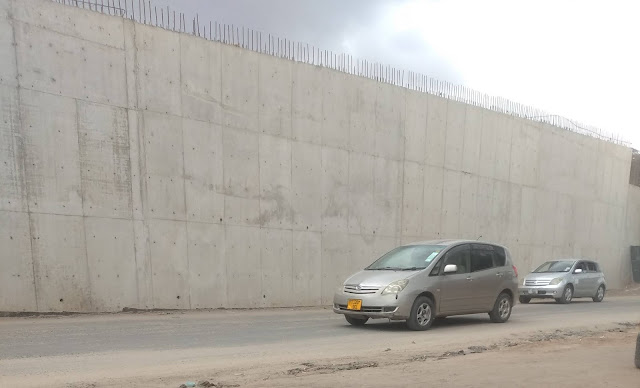REINFORCEMENT IN CONCRETE
In construction industry different structures are built, the built structures can be categorized with accordance to construction materials, here we can have steel structures, timber structures and concrete structures.
Concrete structures are the one which most of its structural parts made from concrete material, concrete is the most and widely used material due to its ability to be moulded into different shapes, and having wide range of characteristics (economical concrete of variety properties can be produced for different requirements).
Concrete has high compressive strength, that make concrete made structures to have high capability to withstand compression, cement concrete has low tensile strength that make it unsuitable for structures subjected to high tension.
Due to some weakness and properties of cement concrete, it is reinforced so as to produce a structure with required properties.
Concrete can be reinforced by different kind of materials in different ways per given analysis and design.
The
process of reinforcing the concrete can be done by using different materials such as steel bars, wire mesh and in some instances even bamboo is seen as the substitute of
the steel bars for small projects.
The
reinforcements inside the concrete has different functions so as to build
the structure of desired quality per standard requirements. The following are
functions of the reinforcement in different structures.
To improve Compressive strength
Concrete
is very strong in compression, which exhibit the bending strength of the
concrete which is 67% of the concrete characteristic strength-fcu, then the moment
resistance of the concrete has its limit so we need to provide compressive
reinforcements to take over exceeded value.
The
maximum moment resistance of concrete can be calculated as 0.156fcubd 2, whereby fcu is the
characteristics strength of the concrete, b and d are the breadth and effective
depth of the structural member respectively.
The
provision of the compression reinforcement reduces the size of compression
member, since the compressive strength of the member is dependant to its size
so instead of increasing its size we can simply provide compressive
reinforcement.
Compressive
reinforcement also increases the ductility of the member and reduces long term
defection.
To provide Tensile strength
Concrete
is very strong in compression but weak in tension, while reinforcing material
such as steel, and bamboo are strong in tension weak in compression.
The
reinforcing materials are also inserted into concrete structure to provide
tensile strength into it against tensile stresses, so tension reinforcements
should be provided where concrete structure experience tensile stresses (tension
zone).
To prevent Excessive Cracks
To improve shear strength
Concrete
of different grades has different shear capabilities, the shear capacity of the
concrete is dependant to its characteristics strength-fcu, when the shear capacity of the concrete is exceeded
shear reinforcements or shear links are provided to take over the exceeding value.
Shear
links are known as stirrups in beams and ties in columns








Comments
Post a Comment